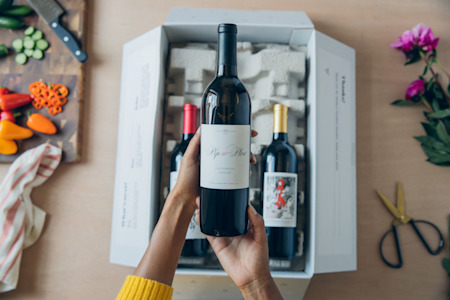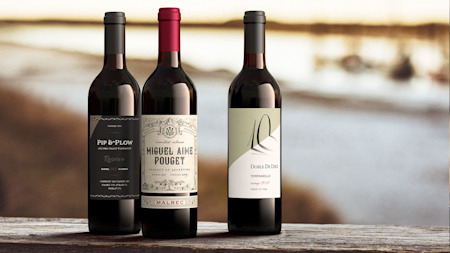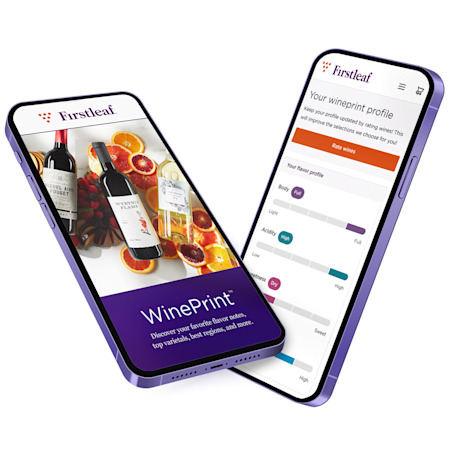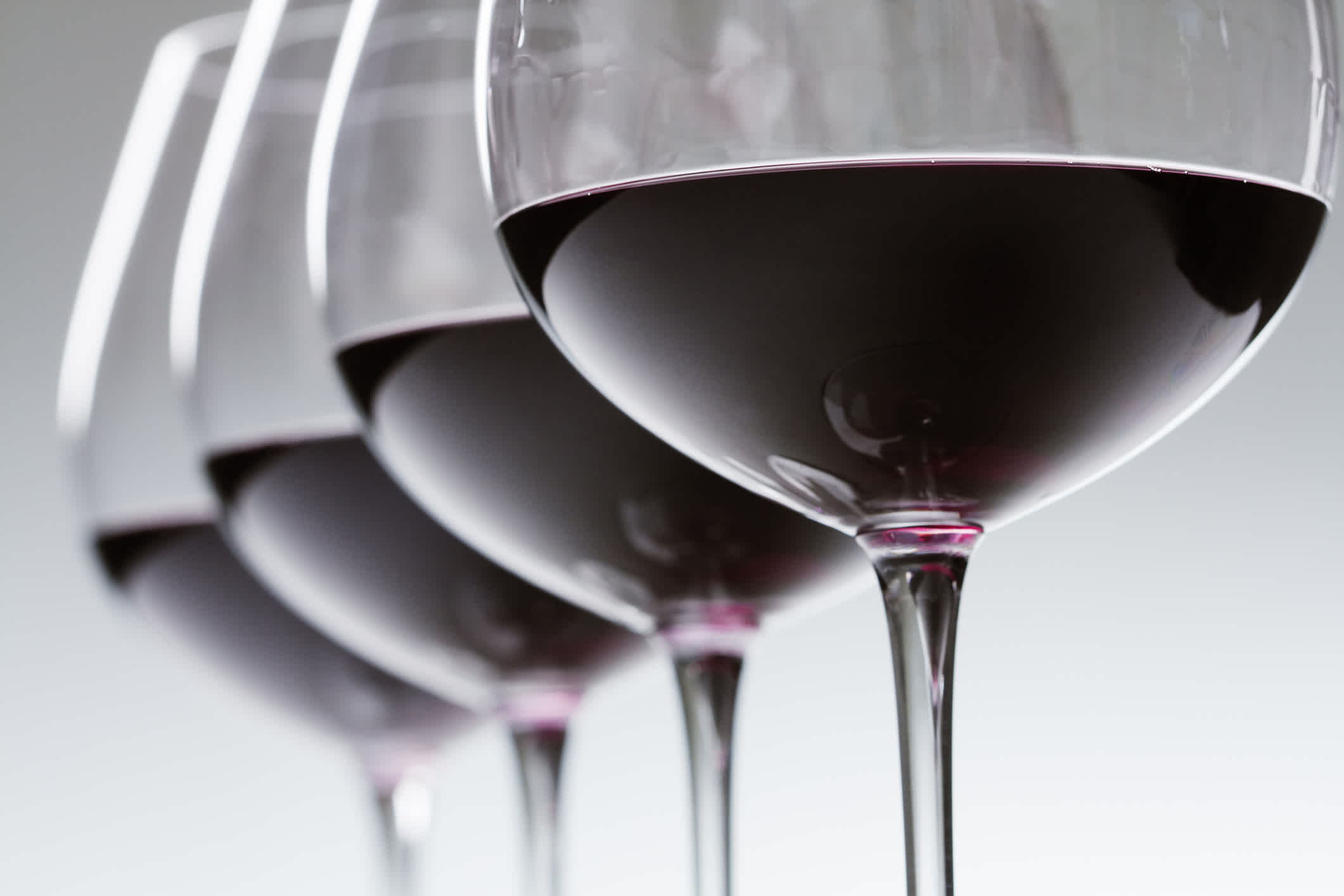What is Wine Body?
Learn all about wine body, and how to tell the difference between full-body wines and light-body wines
Wine body is a sensory tasting term used to describe how heavy a wine feels on your palate as a result of viscosity, the measure of a fluid's resistance to flow, and alcohol content.
Wine body is only one part of the larger mouthfeel of a wine. It is integral to making a balanced wine where no one aspect dominates, but a full-bodied wine is not necessarily of higher quality than a light-bodied wine.
Generally, higher alcohol wines are perceived to have a fuller body, and low alcohol wines are perceived to have lighter bodies. Viscosity also plays into the perception of body, some wines are highly viscous (closer to simple syrup or even honey) and some are not (closer to water). The interplay from these two elements combines to guide our perception of a wine's body.

Take Our Quiz Today
Get award-winning delicious wines from all over the world shipped straight to your door. Take the quiz to get the perfect pairings for your holiday season.
Take The Quiz TodayIN THIS ARTICLE:
Why Is Wine Body Not An Indicator Of Quality?
Many new wine drinkers associate full-body and strongly alcoholic wines with quality, but that should not necessarily be the case. All the different types of wine grapes can express different, nuanced flavors and textures, so simply saying that a wine is "full-bodied" does not mean that it is a balanced and harmonious example of the style.
That being said, fuller-bodied wines are often more popular as the average wine drinker is looking for something to hit the entire palate where light-bodied wines are a bit more nuanced in flavor and style. Do judges just like big, powerful wines or is there something else? Yes and no. Some judges do prefer drinking big wines, after all, they're individuals and like different things, but the amount of wine that judges must contend with at competitions is huge. They taste wine after wine for hours or days. This constant tasting can lead to palate fatigue, where heavy wines will stand out against the more subtle competition.
How To Tell If Your Wine Is Light-Bodied Or Full-Bodied
The first place to start checking the body is on the wine bottle label. By law, the a.b.v. (alcohol by volume) must be printed. It is likely to fall between 10%-14.5%, with 10% being light-bodied wines (think a crisp unoaked white wine) versus 14.5% (think about a big Australian Shiraz).
Going from there swirl the wine and watch how it moves in the glass. There are a few aspects going on here such as wine legs, but it can help to see how viscous a wine is before you taste it.
Feeling how it moves over your tongue will tell you what the body is like. Is it more like velvet or water? Can you smell or taste alcohol? Is it sweet? One easy mistake to make is to count intense fruit flavor as body.
If you can't see the label you can still guess at the body of a wine by working backwards. The best way to learn is to practice by comparing two different wines and thinking about the difference in texture and how they feel in your mouth.

Shop Award Winning Wines
Find award winning full-bodied and light-bodied wines from our wine store and have them shipped straight to your door. Shop wine by color, varietal, region, and more.
Shop Wines NowWine Body And Winemaking
The biggest and heaviest wines come from the ripest grapes. The more sugar in a grape variety, the more alcohol it can make during fermentation. Regions that are hotter tend to make more full-bodied wines. Think about the difference between an Australian Shiraz and a subtle Pinot Noir from Burgundy. This comes from the ripeness of the grapes at harvest.
Wine Body Types
There are many grape varieties and many styles of wine. Many of the wines you will taste have a medium body and don't sit at the extreme ends of the scale, but we are going to list a few wines that are more likely to be either full or light-bodied.
Full-Bodied Red Wine
For big red wines look for warm climates like Australian Shiraz (Syrah), California Cabernet Sauvignon, and young Bordeaux (Cabernet Sauvignon, Cabernet Franc, Merlot, Petit Verdot, and Malbec blends).
Other full-bodied reds to look for include high alcohol (above 13.5%) Zinfandel or Grenache, or examples coming from Barolo (Nebbiolo), Chianti (Sangiovese), and Rioja (Tempranillo).
Light-Bodied Red Wine
Light-bodied red wines are less common than full-bodied, but the easiest to find are wines from Beaujolais Nouveau (made from Gamay grapes) and light Pinot Noirs from cool climates.
Full-Bodied White Wine
Full-bodied whites are even less common than light-bodied reds. The examples that are on the full end of the spectrum have seen significant oak barrel aging and were incredibly ripe when picked. California Chardonnay will be your best bet.
Light-Bodied White Wine
Light-bodied white wines can be found in every wine shop and on every menu. From crisp Sauvignon Blanc and Pinot Grigio to floral Gewürztraminer and Viognier there is a style for every white wine lover.
Fun Fact
Riesling is a tricky grape to predict and can sometimes be full-bodied and is sometimes light-bodied. Check out our guide to Riesling to learn more!
What Kind of Body Does Sparkling Wine Have?
Sparkling wine is typically has a light body like the Italian Prosecco, but some Champagne and aged Cava has a much fuller body.
What Kind of Body Does Dessert Wine Have?
Sugar can affect our senses, but once again the body is mostly determined by alcoholic content. Some dessert wines are incredibly low in alcohol and some are incredibly high.
IN THIS ARTICLE

WinePrint™ by Firstleaf
Are you looking to learn more about your wine preferences? Check out our Wine Print for an in-depth look at your personal tasting profile. Discover your favorite wines, varietals, regions, and tasting notes and get personalized recommendations wherever you are.
Learn More